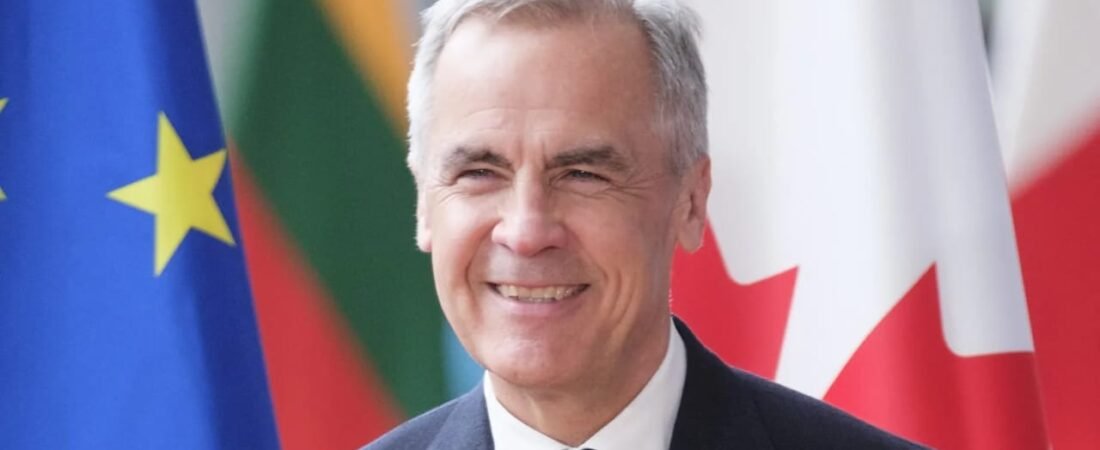A New Vision for Sovereignty and Global Standing
In the face of mounting U.S. nationalism under former President Donald Trump’s enduring influence, Canada is moving with uncharacteristic urgency to redefine its national identity, strengthen its institutions, and project global leadership. Canadian leaders are embracing a vision of “nation-building” that combines economic modernization, cultural revival, and geopolitical assertiveness — a sharp contrast to America’s inward turn.
This isn’t just policy reform; it’s a generational shift. And it’s setting Canada up to rival America not through confrontation, but by offering a new model of what a modern liberal democracy can be in the 21st century.
Economic Independence: Shaking Off Over-Reliance on the U.S.
For decades, Canada’s economy has leaned heavily on its southern neighbor. Over 70% of Canadian exports still go to the U.S., and many industries are deeply integrated across the border. However, recent disruptions — from Trump-era tariffs to the politicization of trade deals — have sparked a national reevaluation.
Key initiatives include:
Supply Chain Diversification: Ottawa is investing billions in domestic manufacturing of EV batteries, semiconductors, and green technologies, particularly in Ontario and Quebec.
Trade Expansion: Canada is deepening ties with Europe (via CETA), the Indo-Pacific (CPTPP), and Latin America. These moves aim to buffer the country from the volatility of U.S. politics and assert it as a reliable global trade partner.
Economically, the message is clear: Canada wants to be more than just a junior partner to the U.S.
Military and Strategic Realignment: From Soft Power to Smart Power
While Canada has long leaned on diplomacy and peacekeeping, the Ukraine war and rising global tensions have pushed the Trudeau government and its allies to rethink defense.
Major steps include:
Military Spending Boost: Canada has pledged to reach the NATO target of 2% of GDP on defense by 2029, a major shift from its traditionally low levels.
Arctic Sovereignty: With melting ice caps exposing new trade routes and territorial vulnerabilities, Canada is investing in Arctic surveillance and indigenous-led environmental stewardship.
Technological Edge: AI, cyber defense, and aerospace innovation are becoming national priorities, backed by major federal and provincial investments.
Unlike Trump’s rhetoric-heavy militarism, Canada is taking a calculated approach that balances capability with multilateral cooperation.
Indigenous Reconciliation as Nation-Building
Whereas American politics under Trump often fueled divisions, Canada is doubling down on inclusion — particularly with Indigenous peoples. Nation-building here means confronting historical injustices and empowering Indigenous voices.
Groundbreaking actions:
Land Back Agreements: New frameworks are transferring stewardship and ownership of lands to First Nations, not just symbolic apologies.
Economic Participation: Indigenous-led energy and resource projects are gaining federal support, blending sustainability with sovereignty.
Language and Education Revitalization: Schools across Canada are incorporating Indigenous languages and history as core curriculum — a fundamental cultural shift.
Canada’s reconciliation is still fraught and incomplete, but it is now being treated as a central pillar of the nation’s future, not a side note.
Immigration and Demographics: A Global Talent Magnet
While Trump-era America cracked down on immigration, Canada has become more welcoming — and strategic — about it. With an aging population and labor shortages, the federal government has ramped up immigration targets to over 500,000 newcomers annually.
Key differences:
Point-Based System: Skilled immigrants, including tech workers, healthcare professionals, and entrepreneurs, are prioritized.
Pathways for Refugees: Special programs for Afghan, Syrian, and now Ukrainian refugees reflect Canada’s humanitarian approach.
City-Led Innovation: Toronto, Vancouver, and Calgary are developing localized integration models that foster inclusion and economic growth.
This demographic openness is positioning Canada as one of the most desirable destinations for global talent — and as a counter-narrative to American isolationism.
Cultural Soft Power: A Story the World Wants to Hear
While American culture often dominates global entertainment, Canada is now investing more in promoting its own values — multiculturalism, diversity, and environmental stewardship — through media, art, and diplomacy.
Cultural diplomacy tools:
CBC International Expansion: Canada’s public broadcaster is launching content in multiple languages to reach global audiences.
Green Leadership: From climate summits to Arctic protection, Canada is branding itself as a climate leader, in sharp contrast to Trump-era denialism.
Indigenous Art and Storytelling: Canadian film festivals and galleries are elevating Indigenous voices to global platforms.
This cultural soft power strategy is subtle but potent — framing Canada not just as America’s “nice neighbor,” but as a nation with its own compelling vision.
A Global Rivalry Without a War
To be clear, Canada is not trying to overtake the U.S. in military might or economic size. That would be unrealistic. But what Canada is doing is challenging American leadership in the global imagination — particularly as Trump’s vision of America remains divisive abroad.
In global forums, Canada is increasingly seen as a “stable democracy,” a “reliable partner,” and a “model for pluralism.” These may seem like diplomatic platitudes, but in a world facing authoritarian creep, climate crisis, and cultural polarization, they matter more than ever.
Conclusion: Competing Through Values, Not Volume
Canada’s rapid pivot toward assertive nation-building is more than a political strategy — it’s a response to a changing world and an increasingly unpredictable U.S. Rather than mimic Trump’s America, Canada is defining itself through collaboration, inclusivity, and long-term planning.
Whether this strategy succeeds remains to be seen. But one thing is clear: Canada is no longer content to live in America’s shadow. It’s stepping into its own spotlight.
